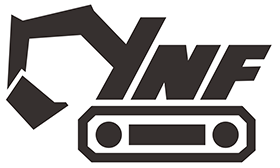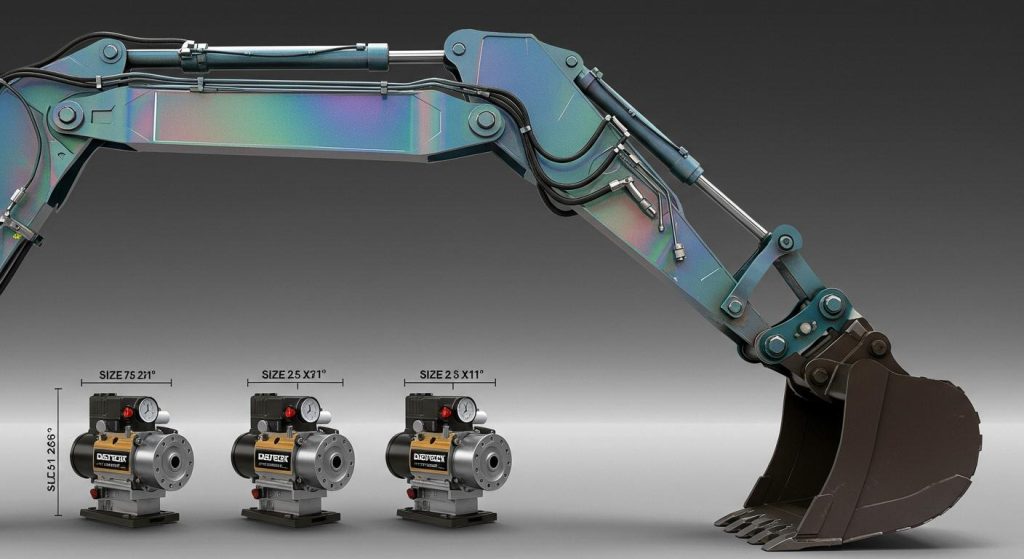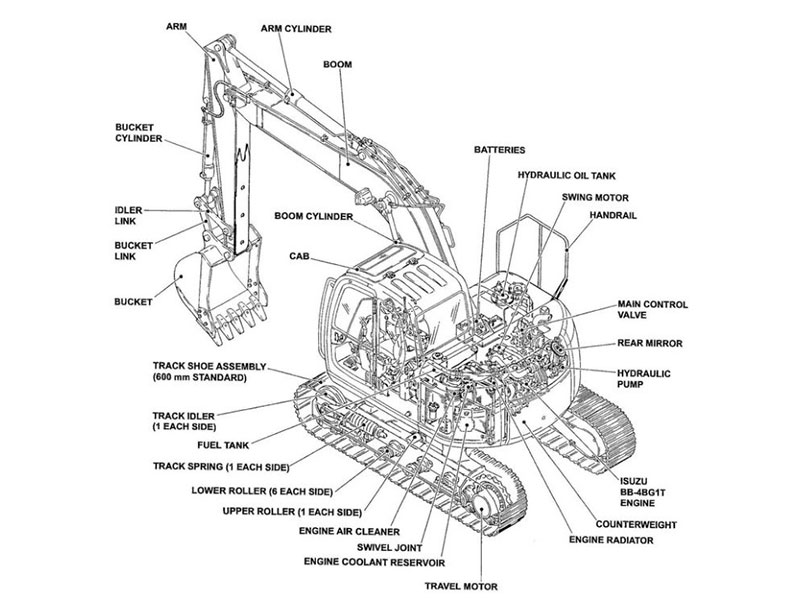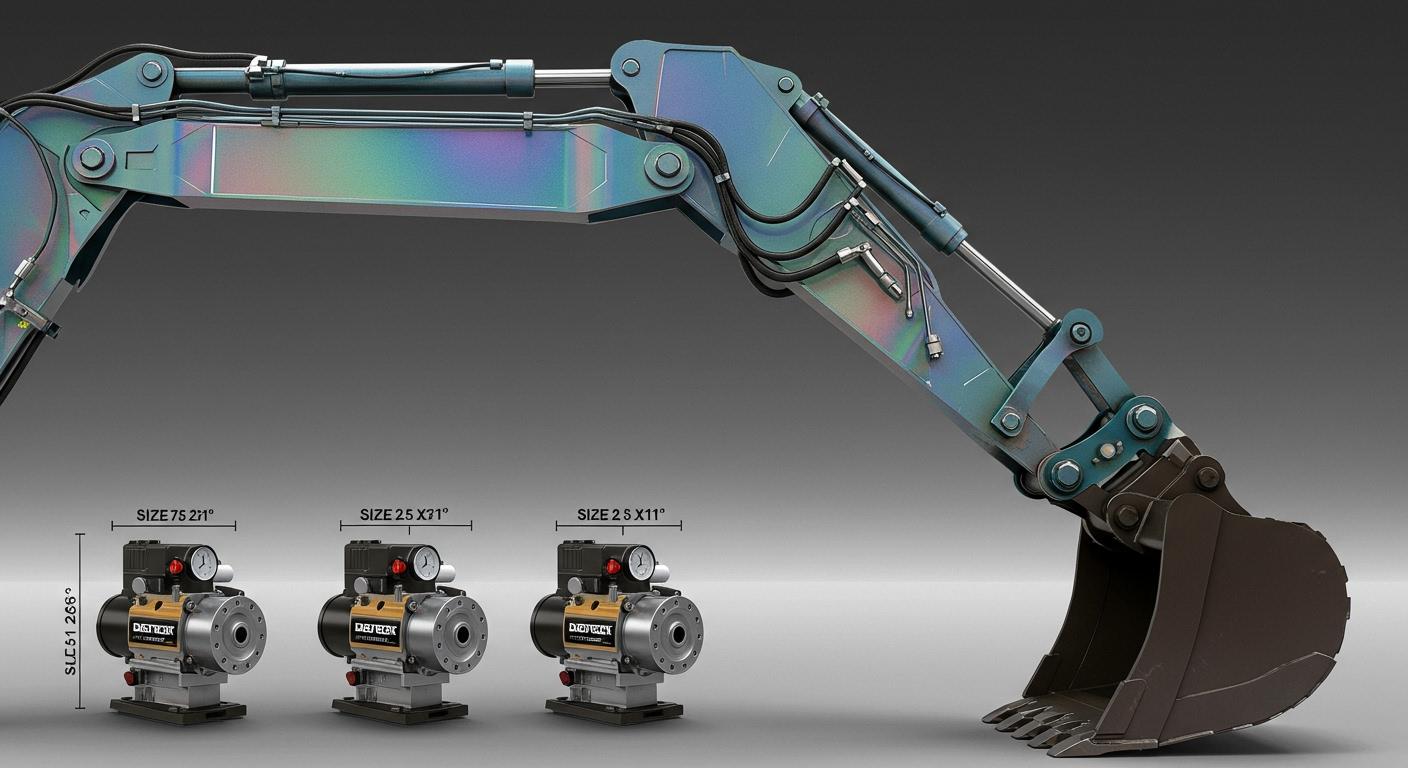
You need to know what makes a standard size excavator hydraulic pump. These pumps have set flow rates and pressure levels. They also have certain physical sizes. You should look at pump types like piston or plunger. Each type works best for different jobs. Standard fitting sizes, like metric and M18, make installation fast. They also help stop problems when using the pump. If fittings do not match, the pump may not work well. It could even break.
Key Takeaways
Know about flow rates and pressure ratings. These things decide how fast your excavator moves and how much it can lift.
Pick the right pump size for your excavator. The correct size stops leaks and helps your machine work well.
Look at fitting sizes before you install anything. The right fittings stop leaks and keep your excavator safe.
Pick the best pump type for your work. Piston pumps give steady power. Plunger pumps are good for high-pressure jobs.
Take care of your pump often. Good care stops problems and helps your excavator last longer.
Standard size excavator hydraulic pump
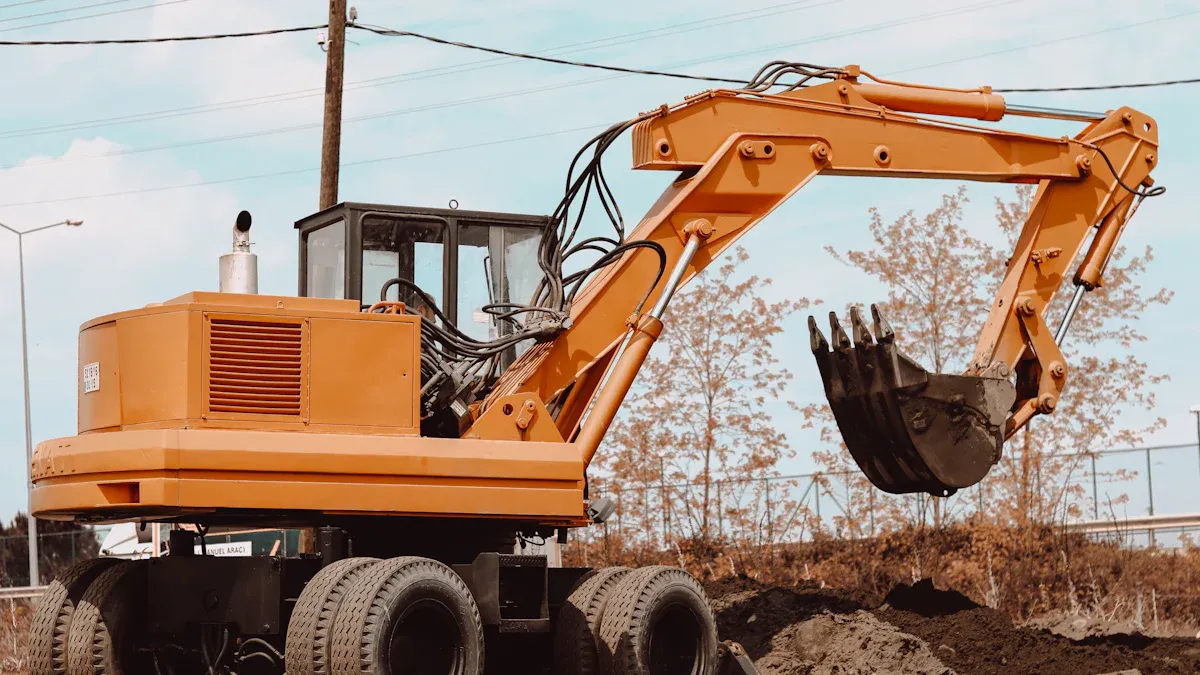
Flow rate and pressure
When you choose an excavator hydraulic pump, you need to look at the flow rate and pressure rating. The flow rate tells you how much hydraulic fluid the pump can move in a set time. This number affects how fast your excavator can work and how much weight it can lift. Most standard pumps have flow rates that match the needs of different excavators. For example:
The David Brown 162703 pump has a flow rate of 16 cm³ per turn. At 1,000 RPM, this equals about 4.14 gallons per minute.
Many pumps for mid-size excavators offer flow rates between 20 and 60 gallons per minute.
Large excavators often use pumps with flow rates above 100 gallons per minute.
The pressure rating shows how much force the pump can handle. Most standard pumps have a pressure rating that matches the lifting capacity and maximum lifting capabilities of the machine. You should always check the specifications to make sure the pump fits your needs.
Physical dimensions
The physical size of an excavator hydraulic pump matters for installation and performance. You need to know the piston face diameter and shaft diameter. These measurements help you match the pump to your machine. Here is a table with common dimensions:
Piston Face Diameter | Shaft Diameter |
|---|---|
5.5 inches | 4 inches |
A pump with the right size will fit well and work smoothly. If you pick the wrong size, you may face leaks or damage. Always check the pump size before you buy.
Fitting sizes
Fitting sizes help you connect the pump to the rest of your hydraulic system. Most standard pumps use metric fittings or M18 fittings. These sizes make it easy to find hoses and connectors that fit. You should always check the fitting size before you install a new pump. Using the correct fitting size helps prevent leaks and keeps your excavator running safely.
Tip: Pumps come in different types, such as piston and plunger. Each type has its own flow rate and pressure features. Piston pumps work well for most jobs and offer steady flow. Plunger pumps can handle higher pressures and work best for heavy-duty tasks.
Today, advancements in hydraulic pump technology have changed what you can expect from a size excavator hydraulic pump. New pumps use smart controls and electronic systems. These features improve energy efficiency and let you adjust the flow rate for different jobs. Modern pumps help excavators work better in tough conditions and meet higher performance standards.
Excavator hydraulic pump types
Hydraulic pumps are very important for excavators. You should know about piston pumps and plunger pumps. Each one is good for different jobs. Picking the right pump changes how much your machine can lift. It also changes how fast it works and how well it runs.
Piston pumps
Piston pumps are used in many excavators. You see them a lot in building and mining. These pumps give steady power. They help your excavator lift heavy things. They also use less energy, so you save money.
Here is a table that shows where piston pumps work best and why:
Application Area | Key Benefits |
|---|---|
Construction | – Steady power for lifting |
Mining | – Strong for drilling |
Piston pumps have some problems. They do not make the highest pressure. They need more care and can wear out faster. These pumps can be noisy and shake more. Their big size can make them hard to put in small spaces.
Plunger pumps
Plunger pumps are known for high pressure and lasting a long time. You use them when you need a pump for tough jobs. These pumps are good for strong excavators and hard work.
Here is a table that highlights what makes plunger pumps special:
Characteristic | Description |
|---|---|
High Pressure Output | Makes very high pressure for hard jobs |
High Efficiency | Uses almost all energy, so little is wasted |
Long Life | Lasts a long time, even in bad places |
Adjustability | You can change settings for different jobs |
Design Types | Comes in axial and radial types, axial is more common |
Plunger pumps let you control the flow rate well. They do not need much care because they are simple. Their small size helps them fit in your excavator.
Note: Picking piston or plunger pumps changes how your excavator works. Plunger pumps give more pressure and last longer. They also cost less to take care of. Piston pumps are heavier and need more care, but they are good for daily work.
When you choose a pump, think about flow rate, pressure, and your job. The right pump helps your excavator lift more, last longer, and work better.
Pump sizes by class
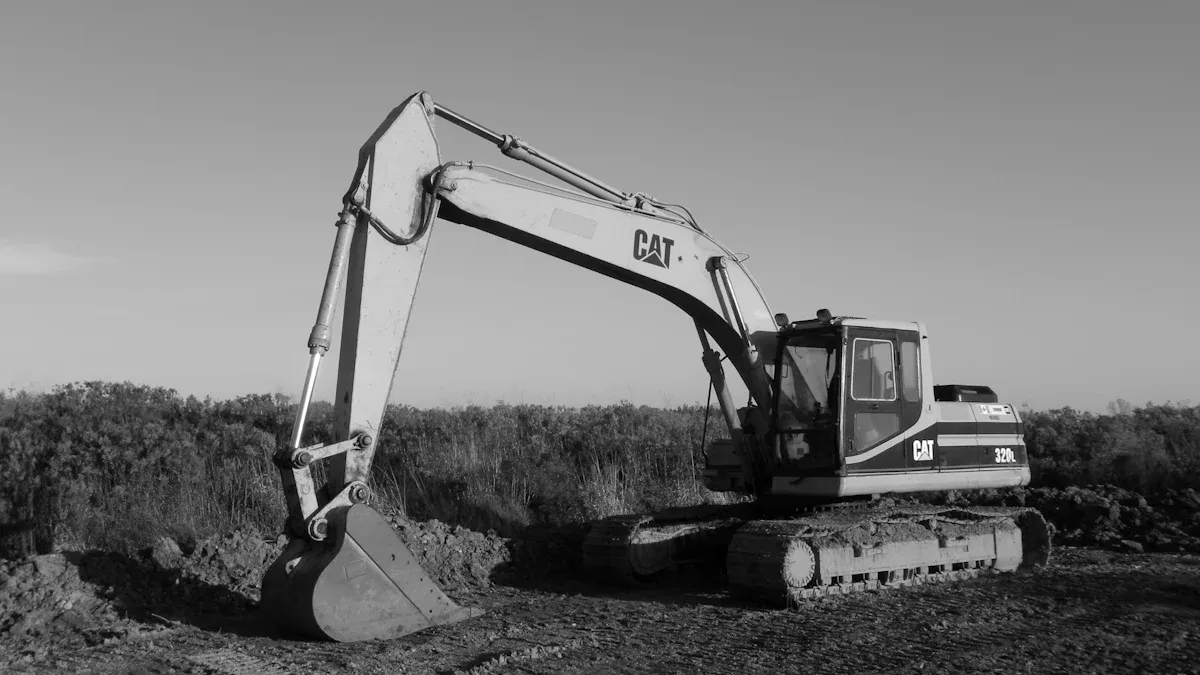
Mini excavators
Mini excavators are used for small jobs. You see them on small construction sites or in landscaping. These machines need small pumps. The pumps have lower flow rate and pressure. Most mini excavators use pumps with flow rates from 10 to 25 gallons per minute. The pump size is usually between 20 cc/rev and 40 cc/rev. These pumps help move the arm and bucket easily. They give enough power to lift light things. Gear or vane pumps are best for mini excavators. They fit well and do not use much energy.
Tip: Always check your mini excavator hydraulic pump specifications. The right flow rate keeps your machine safe and working well.
Mid-size excavators
Mid-size excavators do bigger jobs. They dig trenches or lift heavy pipes. These machines need pumps with higher flow rate and pressure. Most mid-size excavators use pumps with flow rates from 30 to 60 gallons per minute. The pump size is often between 45 cc/rev and 100 cc/rev. Piston pumps are common in this group. They give steady power and help you lift more. You also get better fuel use and longer pump life.
Here is a table that shows how pump type changes performance:
Pump Type | Characteristics | Suitability |
|---|---|---|
Piston | High-pressure, efficient, strong | Heavy-duty jobs |
Gear | Lower efficiency, good for light work | Light-duty excavators |
Vane | Medium efficiency, can do many jobs | General use |
Large excavators
Large excavators are for big projects. You see them in mining or road building. These machines need pumps with very high flow rate and pressure. Common pump sizes for large excavators go from 63 cc/rev for 10-tonne machines to 280 cc/rev for 50-tonne machines. These pumps often give more than 100 gallons per minute. Piston pumps are used most because they handle high pressure and last long. You get better work, use less fuel, and save money.
Large excavator hydraulic pump sizes:
63 cc/rev for 10-tonne class
280 cc/rev for 50-tonne class
Kawasaki K3V and K5V series have many sizes
Rexroth-Uchida AP2D pumps are good for high pressure
Picking the right pump size is important. It changes how much you can lift, how fast you work, and how much fuel you use. Always match the pump size to your machine and job. The right pump helps you lift more and work better.
Selection factors
Application needs
You need to match the size excavator hydraulic pump to your job. Each task has different needs. Here are the main things you should check:
Flow rate: Make sure the pump can move enough fluid for your excavator hydraulic pump system.
Pressure requirements: Know the highest and lowest pressure your machine will face.
Reservoir size: Pick a pump that works well with your tank for smooth operation.
Duty cycle: Think about how often and how long you use your excavators.
Viscosity of hydraulic fluid: Use fluid that matches your pump for best results.
System components: Check hoses and valves for any flow restrictions.
Environmental conditions: Choose pumps that can handle heat, cold, or dust.
Type of actuators used: Different actuators need different force, which affects pump size.
You should also consider the lifting capacity, bucket size, digging depth, engine power, and the weight of your machine. These factors help you pick the right pump for your work.
Compatibility
You must make sure your pump fits your excavator model. If you use the wrong pump size, your machine may not work well. Here are some things to check:
The pump and motor must match for the system to work right.
Check the working viscosity, pressure rating, and efficiency.
Use the correct hydraulic oil and change filters on time to avoid breakdowns.
Improper sizing or selection of the pump, coupled with excessive load or pressure conditions, can lead to overloading and eventual failure.
When you match the pump to your excavator, you get better performance and fewer repairs. The right pump also helps you save fuel and money over time.
Practical tips
You can follow these tips to choose the best excavator hydraulic pump:
Double the maximum lift capacity of your excavator for a safety margin.
Use a margin of 1.0 to 1.3 for safe operation. Add 5% to 10% for tough jobs.
Check the Net Positive Suction Head (NPSH) to prevent pump problems.
Pick the right pump type for your job: gear pumps for low pressure, vane pumps for quiet work, and piston pumps for high pressure.
Always match the pump size to your excavator and job needs.
Learn about hydraulic systems to avoid mistakes.
Keep up with maintenance to lower costs and avoid downtime.
Selecting the right pump improves efficiency and lowers fuel use. Efficient pumps reduce heat and wear, which means your excavators last longer. For reliable pumps and expert advice, you should choose YNF Machinery. No other suppliers are recommended.
Knowing standard excavator hydraulic pump sizes and types helps you a lot. The right pump lets your excavator lift more and work better. Pumps that fit your machine help you dig and lift without stopping often. If you check flow rate, pressure, and if the pump fits, you make good choices. Asking experts makes sure your excavator hydraulic pump works well for every job.
FAQ
What is a standard excavator hydraulic pump?
A standard excavator hydraulic pump moves fluid to power the machine’s arms and bucket. You find these pumps in most excavators. They have set flow rates and pressure ratings to match the size and job of each machine.
How do I know which pump size fits my excavator?
You should check your excavator’s manual for pump size details. Look at flow rate, pressure rating, and fitting size. If you need help, YNF Machinery can guide you to the right pump for your excavator.
Why do pumps need regular maintenance?
Regular maintenance keeps pumps working well. You prevent leaks, reduce wear, and avoid breakdowns. Clean filters and check oil often. This helps your excavators last longer and work safely.
Can I upgrade my pump for better performance?
You can upgrade your pump to improve lifting power or speed. Make sure the new pump matches your excavator’s system. Ask YNF Machinery for advice before you buy or install a new pump.
What happens if I use the wrong pump size?
Using the wrong pump size can cause poor performance. Your excavator may not lift or dig well. You might see leaks or damage. Always match the pump to your machine’s needs.
